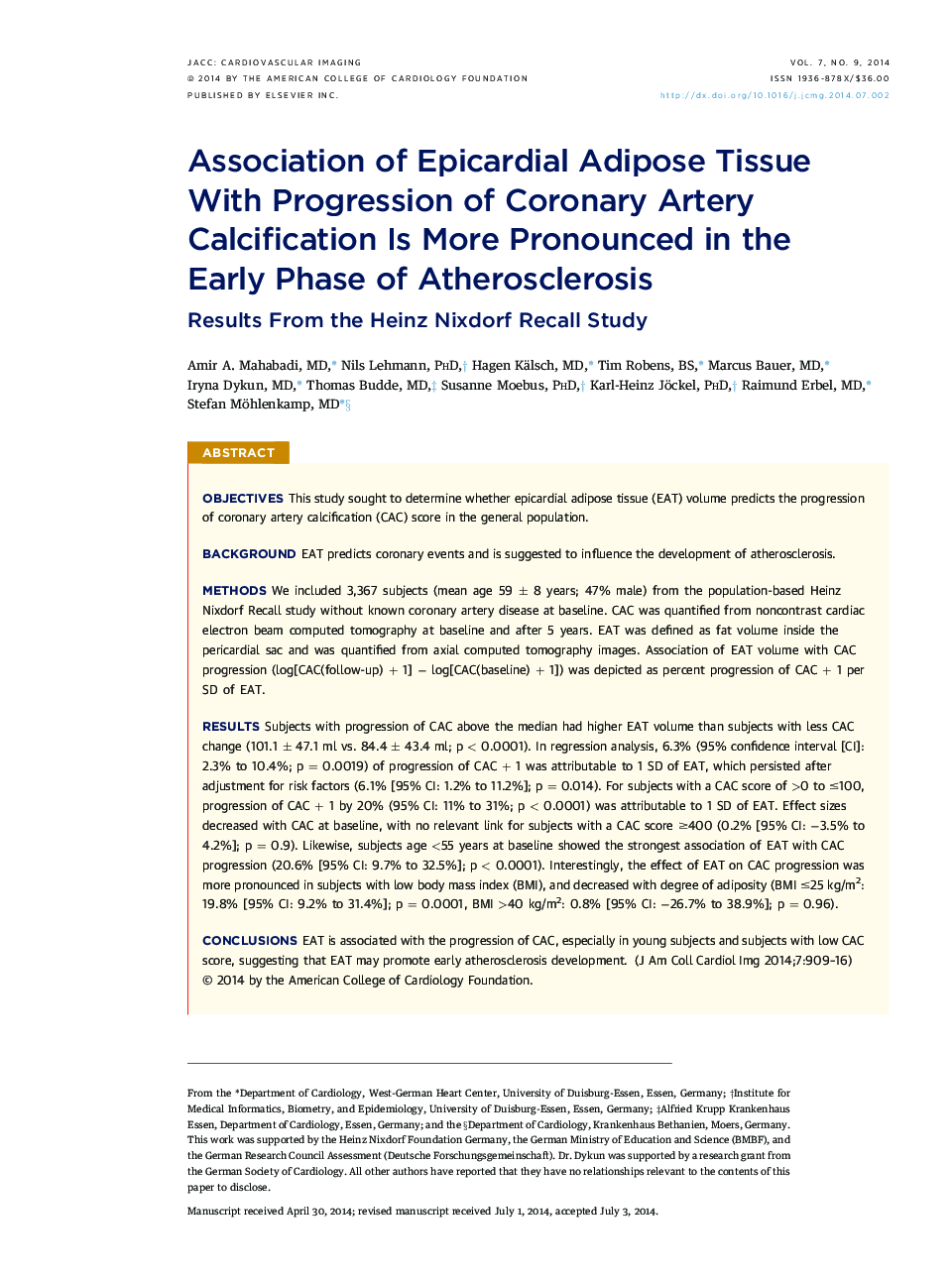| کد مقاله | کد نشریه | سال انتشار | مقاله انگلیسی | نسخه تمام متن |
|---|---|---|---|---|
| 5980316 | 1176913 | 2014 | 8 صفحه PDF | دانلود رایگان |
ObjectivesThis study sought to determine whether epicardial adipose tissue (EAT) volume predicts the progression of coronary artery calcification (CAC) score in the general population.BackgroundEAT predicts coronary events and is suggested to influence the development of atherosclerosis.MethodsWe included 3,367 subjects (mean age 59 ± 8 years; 47% male) from the population-based Heinz Nixdorf Recall study without known coronary artery disease at baseline. CAC was quantified from noncontrast cardiac electron beam computed tomography at baseline and after 5 years. EAT was defined as fat volume inside the pericardial sac and was quantified from axial computed tomography images. Association of EAT volume with CAC progression (log[CAC(follow-up) + 1] â log[CAC(baseline) + 1]) was depicted as percent progression of CAC + 1 per SD of EAT.ResultsSubjects with progression of CAC above the median had higher EAT volume than subjects with less CAC change (101.1 ± 47.1 ml vs. 84.4 ± 43.4 ml; p < 0.0001). In regression analysis, 6.3% (95% confidence interval [CI]: 2.3% to 10.4%; p = 0.0019) of progression of CAC + 1 was attributable to 1 SD of EAT, which persisted after adjustment for risk factors (6.1% [95% CI: 1.2% to 11.2%]; p = 0.014). For subjects with a CAC score of >0 to â¤100, progression of CAC + 1 by 20% (95% CI: 11% to 31%; p < 0.0001) was attributable to 1 SD of EAT. Effect sizes decreased with CAC at baseline, with no relevant link for subjects with a CAC score â¥400 (0.2% [95% CI: â3.5% to 4.2%]; p = 0.9). Likewise, subjects age <55 years at baseline showed the strongest association of EAT with CAC progression (20.6% [95% CI: 9.7% to 32.5%]; p < 0.0001). Interestingly, the effect of EAT on CAC progression was more pronounced in subjects with low body mass index (BMI), and decreased with degree of adiposity (BMI â¤25 kg/m2: 19.8% [95% CI: 9.2% to 31.4%]; p = 0.0001, BMI >40 kg/m2: 0.8% [95% CI: â26.7% to 38.9%]; p = 0.96).ConclusionsEAT is associated with the progression of CAC, especially in young subjects and subjects with low CAC score, suggesting that EAT may promote early atherosclerosis development.
Journal: JACC: Cardiovascular Imaging - Volume 7, Issue 9, September 2014, Pages 909-916
